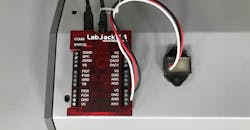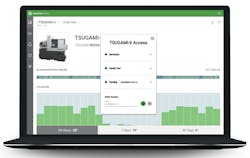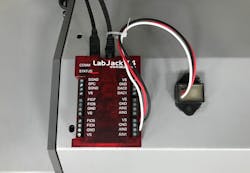Finding new ways of operating and new revenue streams is essential for any OEM dealing with the manufacturing industry. Machines can last a long time and manufacturers don’t take kindly to the notion of planned obsolescence. With IoT, OEMs can improve the quality of their products and services, as well as open up new avenues for business that they’ve never had before. It’s a brave new world with Industry 4.0.
Monitoring data for improved machine quality. Having access to machine data is the best and smartest way for OEMs to improve their own manufacturing processes and machines. If they can build better machines that are improved because the engineers have access to performance data, the OEM stands to benefit.
While an engineer may have created models to figure out how a machine should perform, access to real data from actual machines can give them insight into how they do perform. The engineer is then far better equipped to look at what are reasonable parameters for each machine and enable far more effective predictive maintenance.
An example of how an OEM can improve their standing with any manufacturer is by ensuring they can upgrade legacy systems with adequate controls. A reliable machine, and the company that provided it and maintains it, is more valuable than looking for the “best deal.” Any manufacturer knows that, and the OEMs that keep it in mind will benefit.
Analytics platforms like MachineMetrics leverage IIoT connectivity to enable OEMs to resolve machine problems through remote diagnosis and reduce on-site service visits by 10-20%. They optimize preventative maintenance plans, validate warranty claims, and receive predictive maintenance alerts to understand new service opportunities post-warranty period.
Remote machine monitoring as a new machine service option. Servicing machines has historically been a costly and time-consuming process. It would usually require an on-site visit for visual inspection of any issues, potentially including extensive travel time and adding further to the delays in getting a machine operational again. A service team would not necessarily be able to detect which parts were malfunctioning, resulting in a manual (and lengthy) process of checking each part that could be involved. Instead, a remote monitoring system allows OEMs to troubleshoot the issues via the data from anywhere.
Beyond service response, reducing unplanned downtime by proactively monitoring and detecting issues is a huge cost savings in manufacturing. With remote machine monitoring, an OEM can collect data about the operations of any given unit and not only react faster to any impending issue, but even predict issues based on that data. That ability to engage in predictive maintenance from a distance is in fact an excellent unique selling proposition that OEMs can offer to their clients as part of their service package.
Without leaving their own location, an OEM can detect any exceptions or activity that is falling outside of acceptable parameters, service the machines in advance of a problem, and therefore virtually eliminate the impact of any issue for their client.
In addition, if there is an unexpected failure, the OEM is able to use the data collected from the machine to determine what was occurring prior to the problem. An operations person may not have that knowledge: They might not have been present when it failed, or they simply might not know that they were using the machine in a way that it wasn’t meant to be used.
Some machines with legacy controls or no controls at all require additional hardware/integration support to capture data. Seen here, digital and analog I/O is captured through auxiliary hardware, and sensors can be added either as a new data point or as an addition.
OEMs can get future design ideas from data. In addition to improving their own designs, OEMs will be able to leverage the data that they receive from their customers to create different machines and designs, with less simulation and modelling required. Using the real data from existing infrastructure, the options for finding new designs or even new uses for machine designs will be unlimited, potentially opening up new markets and new lines for the OEM. This presents a huge opportunity for the OEM to ensure that it stays ahead of their competition.
Industrial IoT is all about data and knowledge. When it comes to staying ahead in very competitive industries, the only real leverage any company has is data. With it, they can find new ways to operate or add to their existing offerings to ensure that their current and future customers are satisfied.
Graham Immerman is director of marketing for MachineMetrics.



